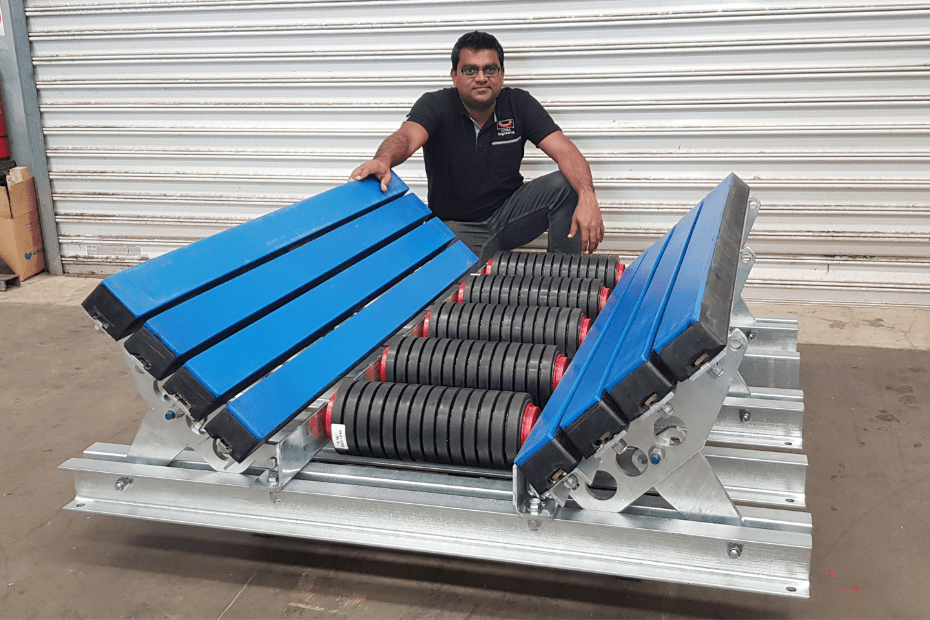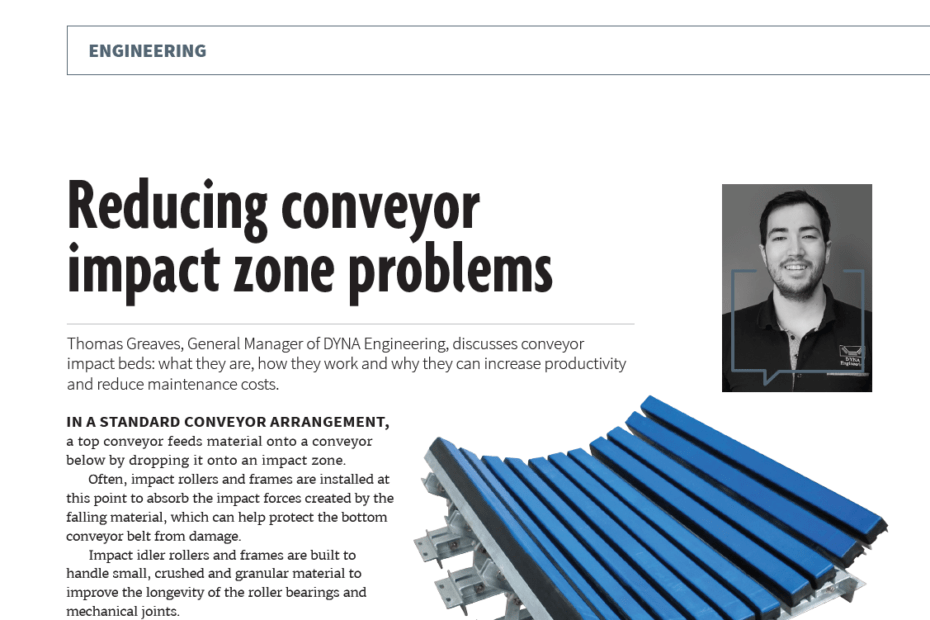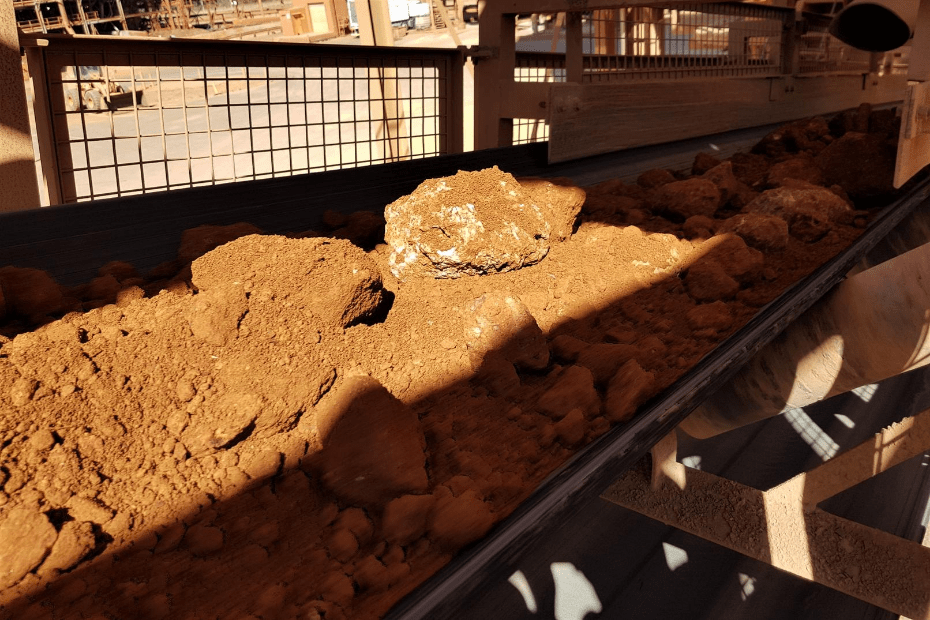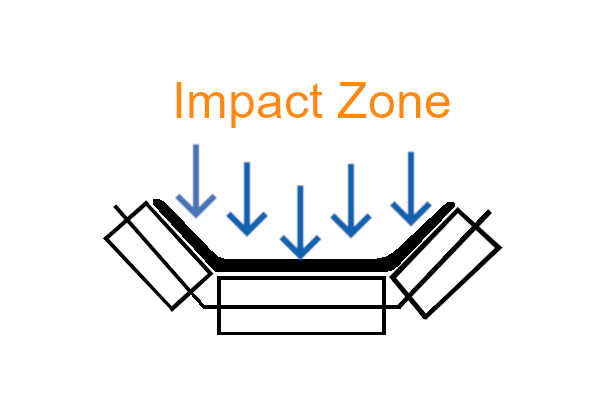
Case Study: How to Improve Your Impact Zone
A Standard Impact Zone Arrangement
In a standard conveyor arrangement, the top conveyor feeds the material onto the bottom conveyor. This occurs by dropping material off the end of the top conveyor and into the impact zone of the bottom conveyor.
Impact rollers and frames are installed to absorb the impact forces created by the falling material, protecting the bottom conveyor belt from damage.
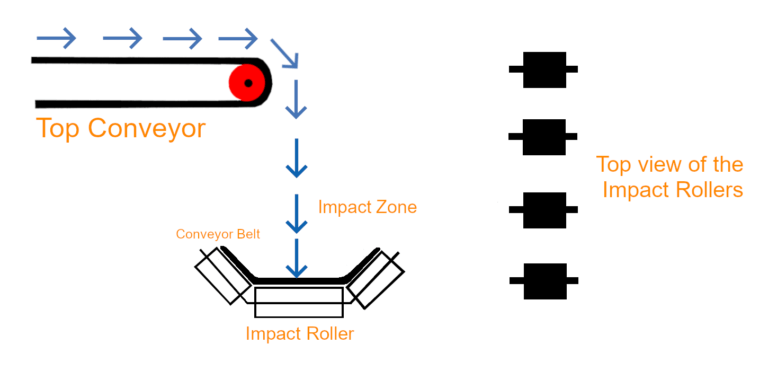
Improving Your Impact Zone
Using Impact Rollers
In many cases, crushed ore forms a homogenous flow consisting of small rocks and sand, without the presence of large lumps.
Impact idler rollers and frames are designed and built to handle the impact forces of crushed, small and granular material. Installing these results in a longer service life of the roller bearings and mechanical joints.
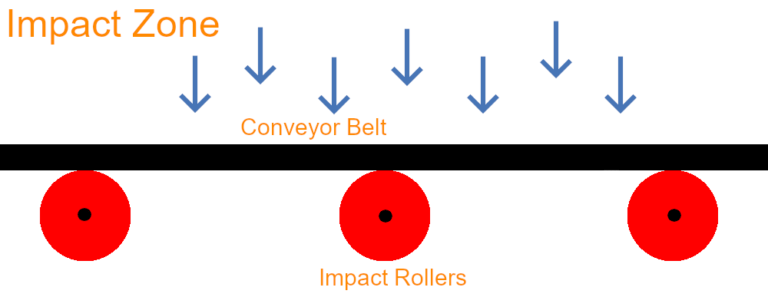
As the forces become greater, impact idler rollers typically suffer premature bearing failure or excessive loading of the connection between the roller shaft and frame.
This results in a bearing stress failure on the bottom of the shaft and mating surface of the frame slot.
Alterations to Process Design
The client determined a sizing issue from the secondary crusher. Thus, a High Pressure Grinding Roller (HPGR) was added to reduce the oversized lumps into a uniform material.
The conveyor design was changed to incorporate two HGPR crushing rollers in the chute between the two conveyors.
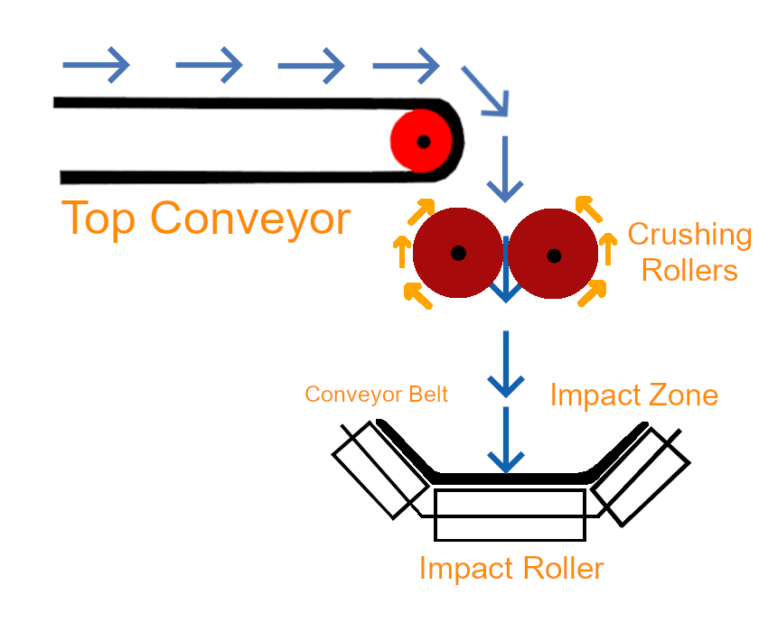
The Issue
The change in design had solved one issue of oversized material entering the bottom conveyor. However, it created another issue: the rotating crushing rollers were effectively firing the crushed material into the impact zone. If you have ever used a ball machine in baseball or cricket, the same principal applies. This substantially increased the impact velocity of the material.
Without the crushing rollers, the material would fall into the impact zone at a constant and predictable velocity due to gravity. At the normal falling velocity, the impact rollers and frames would be suitable to absorb the impact of the falling material. However, the rotating crusher was increasing the impact of the material substantially.
The increased impact became too high for impact rollers and frames. The frames were breaking under the constant pressure and the belt was sustaining damage due to the material impacting the unsupported belt in the gaps between the rollers.
Belt deflection was well above specification; even with a relatively small gap between the impact rollers.
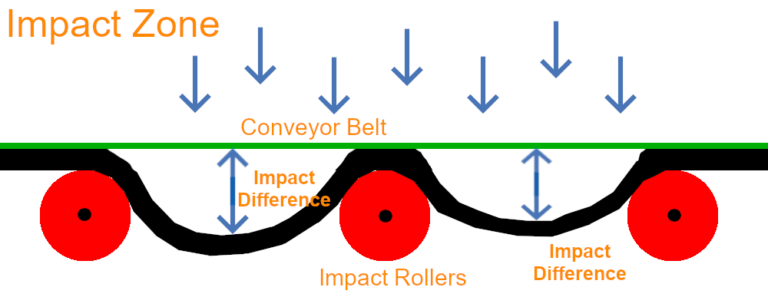
The Solution
The solution was to install an impact bed in the impact zone.
Impact beds have a much higher impact rating than impact rollers and frames. The impact bed frames and bars are able to absorb the higher impact of the material.
Another added advantage is the minimal gap between the impact bars which assists in preventing conveyor belt deflection and denting.
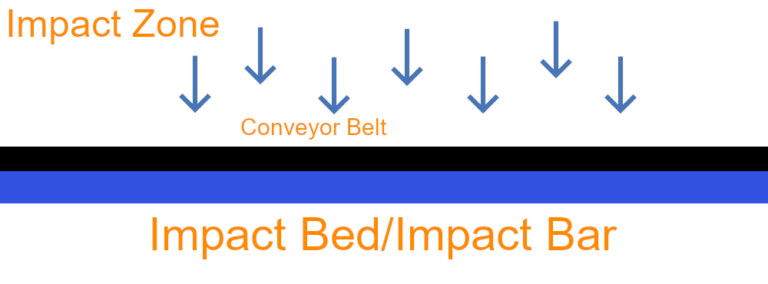
DYNA Engineering Impact Beds

For more information on impact beds check out our blog article: When an Impact Bed is the Right Fit for Your Conveyor. Or check out our impact bed page.
Related Blog Posts
Hybrid Impact Bed
A hybrid impact bed is a spin-off design from the traditional impact bed, which incorporates impact rollers/idlers in the centre of the structure and impact bars on the sides…
Reducing Impact Zone Problems
Our latest Australian Bulk Handling Review article below for the September/October issue highlights everything you need to know about impact beds and how they can help solve your impact…
Common Causes of Belt Damage
Conveyor belts are a viable component in a conveyor system. It is important to maintain them correctly and minimise any potential stoppages or damage to maintain the maximum up time and service life…
